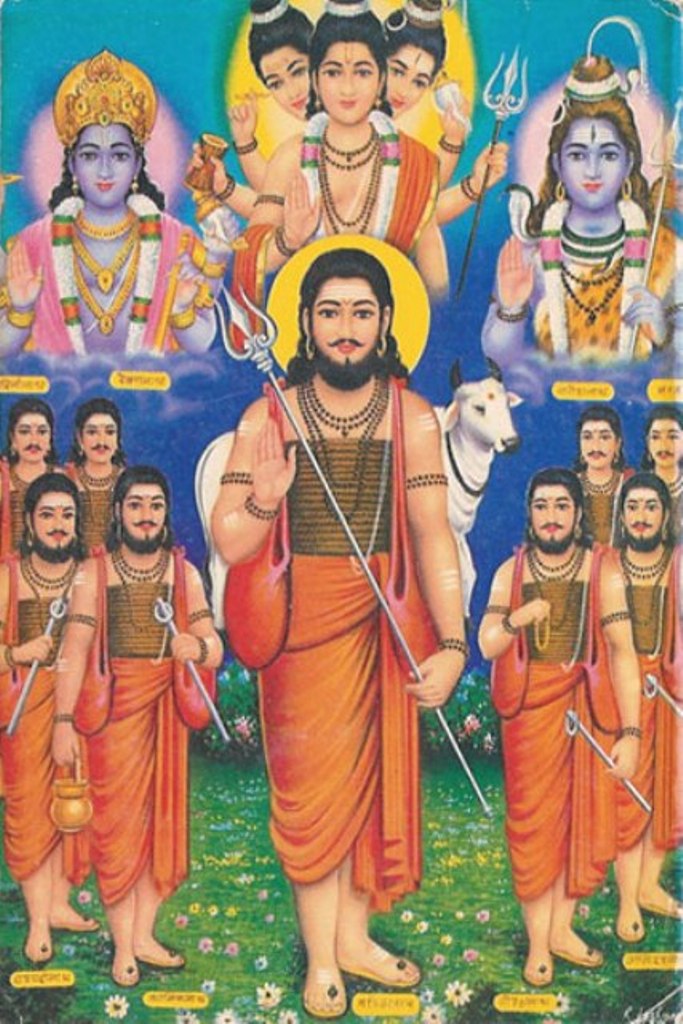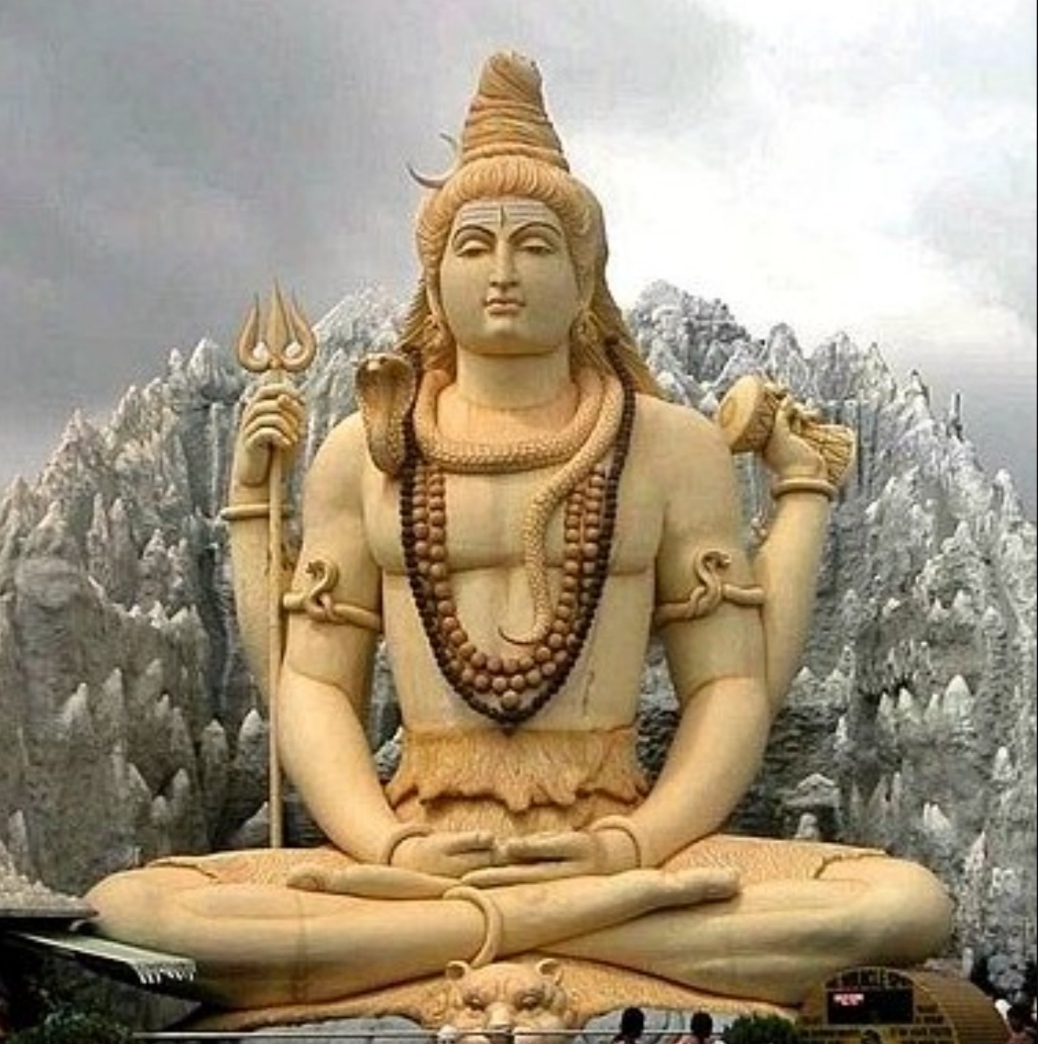|
Adi Natha
The Adinath Sampradaya was a sadhu sub-sect of the greater Nath tradition. Followers of this tradition were given Sannyasa diksha, thus renouncing householder life, and thereafter lived as naked sadhus. Believing that sadhus should live alone until they had attained the goal, they lived in caves, huts, ruined buildings, or empty houses, and always away from towns and villages. Reference to the Adinath Sampradaya is pointed out by Rajmohan Nath (1964) who lists them among the twelve traditional sub-sects of the Nath Sampradaya.Bandyopadhyay, P. K. (1992). ''Natha Cult and Mahanad''. page 73, Delhi, India: B.R. Publishing Corporation. The Adinath Sampradaya is also listed among the sub-divisions of Nath sects in the Census Report, Punjab, 1891, p. 114.Briggs, G. W. (1973). ''Gorakhnath and the Kanphata Yogis''. page 75, (Chart A) Delhi, India: Motilal Banarsidass Publishers. The last sadhu holding authentic guru status in the Adinath Sampradaya was Shri Gurudev Mahendranath, who ... [...More Info...] [...Related Items...] OR: [Wikipedia] [Google] [Baidu] |
Sadhu
''Sadhu'' (, IAST: ' (male), ''sādhvī'' or ''sādhvīne'' (female), also spelled ''saddhu'') is a religious ascetic, mendicant or any holy person in Hinduism and Jainism who has renounced the worldly life. They are sometimes alternatively referred to as'' yogi'', ''sannyasa, sannyasi'' or ''vairagi''. Sādhu means one who practises a 'sadhana' or keenly follows a path of spiritual discipline.″Autobiography of an Yogi″, Yogananda, Paramhamsa, Jaico Publishing House, 127, Mahatma Gandhi Road, Bombay Fort Road, Bombay (Mumbai) – 400 0023 (ed.1997) p.16 Although the vast majority of sādhus are yogi, yogīs, not all yogīs are sādhus. A sādhu's life is solely dedicated to achieving moksha, mokṣa (liberation from the cycle of death and rebirth), the fourth and final Ashrama (stage), aśrama (stage of life), through meditation and contemplation of Brahman. Sādhus often wear simple clothing, such as saffron-coloured clothing in Hinduism and white or nothing in Jainism, ... [...More Info...] [...Related Items...] OR: [Wikipedia] [Google] [Baidu] |
Nath
Natha, also called Nath (), are a Shaivism, Shaiva sub-tradition within Hinduism in India and Nepal. A medieval movement, it combined ideas from Buddhism, Shaivism, Tantra and Yoga traditions of the Indian subcontinent.Natha: Indian religious sect Encyclopedia Britannica (2007) The Naths have been a confederation of devotees who consider Shiva as their first lord or guru, with varying lists of additional gurus. Of these, the 9th or 10th century Matsyendranatha and the ideas and organization mainly developed by Gorakhnath are particularly important. Gorakhnath is considered the originator of the Nath Panth. The Nath tradition has an extensive Shaivism-related theological literature of its own, most of which is ... [...More Info...] [...Related Items...] OR: [Wikipedia] [Google] [Baidu] |
Sannyasa
''Sannyasa'' (), sometimes spelled ''sanyasa'', is the fourth stage within the Hinduism, Hindu system of four life stages known as ''ashrama (stage), ashramas'', the first three being ''brahmacharya'' (celibate student), ''Gṛhastha, grihastha'' (householder) and ''Vānaprastha, vanaprastha'' (forest dweller, retired). ''Sannyasa'' is traditionally conceptualized for men or women in the last years of their life, but young ''brahmachari''s have the choice to skip the householder and retirement stages, renounce worldly and materialistic pursuits and dedicate their lives to spiritual pursuits. ''Sannyasa'', a form of asceticism marked by renunciation of material desires and prejudices, is characterized by a state of disinterest in and detachment from material life, with the purpose of spending one's life in peaceful, spiritual pursuits. An individual in Sanyasa is known as a ''sannyasi'' (male) or ''sannyasini'' (female) in Hinduism. Sannyasa shares similarities with the Sadhu a ... [...More Info...] [...Related Items...] OR: [Wikipedia] [Google] [Baidu] |
Diksha
Diksha (Sanskrit: दीक्षा, IAST: dīkṣā) also spelled diksa, deeksha or deeksa in common usage, translated as a "preparation or consecration for a religious ceremony", is giving of a mantra or an initiation by the guru (in Guru–shishya tradition) of Indian religions such as Hinduism, Buddhism, and Jainism. Diksa is given in a one-to-one ceremony, and typically includes the taking on of a serious spiritual discipline. The word is derived from the Sanskrit root ''dā'' ("to give") plus ''kṣi'' ("to destroy") or alternately from the verb root ''dīkṣ'' ("to consecrate"). ''Dīkṣā'' can be of various types, through the teacher's sight, touch, or word, with the purpose of purifying the disciple or student. Initiation by touch is called ''sparśa dīkṣā''. The bestowing of divine grace through diksa is sometimes called ''śaktipāt''. Another type of ''dīkṣā'', into a monastic order, involves a vow of celibacy, renunciation of all personal possessions a ... [...More Info...] [...Related Items...] OR: [Wikipedia] [Google] [Baidu] |
Sampradaya
''Sampradaya'' (/ səmpɾəd̪ɑjə/,; ), in Indian-origin religions, namely Hinduism, Buddhism, Jainism, and Sikhism, can be translated as 'tradition', 'spiritual lineage', 'sect', or 'religious system'. To ensure continuity and transmission of dharma, various ''sampradayas'' have the Guru-shishya parampara in which a parampara or lineage of successive ''gurus'' (masters) and '' shishyas'' (disciples) serves as a spiritual channel and provides a reliable network of relationships that lends stability to a religious identity. Shramana is vedic term for seeker or shishya. Identification with and followership of ''sampradayas'' is not static, as ''sampradayas'' allows flexibility where one can leave one ''sampradaya'' and enter another or practice religious syncretism by simultaneously following more than one ''sampradaya''. '' Samparda'' is a Punjabi language term, used in Sikhism, for ''sampradayas''. Guru-shishya parampara Sampradayas are living traditions of both teac ... [...More Info...] [...Related Items...] OR: [Wikipedia] [Google] [Baidu] |
Guru
Guru ( ; International Alphabet of Sanskrit Transliteration, IAST: ''guru'') is a Sanskrit term for a "mentor, guide, expert, or master" of certain knowledge or field. In pan-Indian religions, Indian traditions, a guru is more than a teacher: traditionally, the guru is a reverential figure to the disciple (or ''wikt:शिष्य, shisya'' in Sanskrit, literally ''seeker [of knowledge or truth'']) or student, with the guru serving as a "counsellor, who helps mould values, shares experiential knowledge as much as Knowledge#Hinduism, literal knowledge, an Role model, exemplar in life, an inspirational source and who helps in the spiritual evolution of a student". Whatever language it is written in, Judith Simmer-Brown says that a tantra, tantric spiritual text is often codified in an obscure twilight language so that it cannot be understood by anyone without the verbal explanation of a qualified teacher, the guru. A guru is also one's spiritual guide, who helps one to discover the ... [...More Info...] [...Related Items...] OR: [Wikipedia] [Google] [Baidu] |
Diksha
Diksha (Sanskrit: दीक्षा, IAST: dīkṣā) also spelled diksa, deeksha or deeksa in common usage, translated as a "preparation or consecration for a religious ceremony", is giving of a mantra or an initiation by the guru (in Guru–shishya tradition) of Indian religions such as Hinduism, Buddhism, and Jainism. Diksa is given in a one-to-one ceremony, and typically includes the taking on of a serious spiritual discipline. The word is derived from the Sanskrit root ''dā'' ("to give") plus ''kṣi'' ("to destroy") or alternately from the verb root ''dīkṣ'' ("to consecrate"). ''Dīkṣā'' can be of various types, through the teacher's sight, touch, or word, with the purpose of purifying the disciple or student. Initiation by touch is called ''sparśa dīkṣā''. The bestowing of divine grace through diksa is sometimes called ''śaktipāt''. Another type of ''dīkṣā'', into a monastic order, involves a vow of celibacy, renunciation of all personal possessions a ... [...More Info...] [...Related Items...] OR: [Wikipedia] [Google] [Baidu] |
Shiva
Shiva (; , ), also known as Mahadeva (; , , Help:IPA/Sanskrit, [mɐɦaːd̪eːʋɐh]) and Hara, is one of the Hindu deities, principal deities of Hinduism. He is the God in Hinduism, Supreme Being in Shaivism, one of the major traditions within Hinduism. Shiva is known as ''The Destroyer'' within the Trimurti, the Hinduism, Hindu trinity which also includes Brahma and Vishnu. In the Shaivite tradition, Shiva is the Supreme Lord who creates, protects and transforms the universe. In the goddess-oriented Shaktism, Shakta tradition, the Supreme Goddess (Devi) is regarded as the energy and creative power (Shakti) and the equal complementary partner of Shiva. Shiva is one of the five equivalent deities in Panchayatana puja of the Smarta Tradition, Smarta tradition of Hinduism. Shiva has many aspects, benevolent as well as fearsome. In benevolent aspects, he is depicted as an Omniscience, omniscient yogi who lives an Asceticism#Hinduism, ascetic life on Kailasa as well as a house ... [...More Info...] [...Related Items...] OR: [Wikipedia] [Google] [Baidu] |
Matsyendranath
Matsyendranātha, also known as Matsyendra, Macchindranāth, Mīnanātha and Minapa (early 10th century) was a saint and yogi in a number of Buddhism, Buddhist and Hinduism, Hindu traditions. He is considered the revivalist of hatha yoga as well as the author of some of its earliest texts. He is also seen as the founder of the natha ''sampradaya'', having received the teachings from Shiva. He is associated with Kaula (Hinduism), Kaula Shaivism. He is also one of the eighty-four mahasiddhas and considered the guru of Gorakshanath, another known figure in early hatha yoga. He is revered by both Hindus and Buddhists and is sometimes regarded as an incarnation of Avalokiteśvara. In the Siddhar tradition of Tamil Nadu, Matsyendranath is revered as one of the 18 Siddhars of yore, and is also known as Machamuni. The Kasi Viswanathar Temple in Thiruparankundram, Madurai, Tamil Nadu is home to his Jiva, Jeeva Samadhi. Early life Little is known about the life of Matsyendra: he is also ... [...More Info...] [...Related Items...] OR: [Wikipedia] [Google] [Baidu] |
Shaiva Sects
Shaivism (, , ) is one of the major Hindu traditions, which worships Shiva as the supreme being. It is the second-largest Hindu sect after Vaishnavism, constituting about 385 million Hindus, found widely across South Asia (predominantly in Southern India), Sri Lanka, and Nepal.Keay, p.xxvii. The followers of Shaivism are called Shaivas or Shaivites. According to Chakravarti, Shaivism developed as an amalgam of pre-Aryan religions and traditions, Vedic Rudra, and post-Vedic traditions, accommodating local traditions and Yoga, puja and bhakti. According to Bisschop, early shaivism is rooted in the worship of vedic deity Rudra. The earliest evidence for sectarian Rudra-Shiva worship appears with the Pasupata (early CE), possibly owing to the Hindu synthesis, when many local traditions were aligned with the Vedic-Brahmanical fold. The Pāśupata movement rapidly expanded throughout North India, giving rise to different forms of Shaivism, which led to the emergence of various ... [...More Info...] [...Related Items...] OR: [Wikipedia] [Google] [Baidu] |
Hindu Denominations
Hindu denominations, ''sampradayas'', traditions, movements, and sects are traditions and sub-traditions within Hinduism centered on one or more gods or goddesses, such as Vishnu, Shiva, Shakti and so on. The term ''sampradaya'' is used for branches with a particular founder-guru with a particular philosophy. Hinduism has no central doctrinal authority and many practising Hindus do not claim to belong to any particular denomination or tradition. Four major traditions are, however, used in scholarly studies: ''Vaishnavism'', ''Shaivism'', ''Shaktism'' and ''Smartism''.Lance Nelson (2007), An Introductory Dictionary of Theology and Religious Studies (Editors: Orlando O. Espín, James B. Nickoloff), Liturgical Press, , pages 562–563 These are sometimes referred to as the denominations of Hinduism, and they differ in the primary deity at the centre of each tradition.SS Kumar (2010), Bhakti — the Yoga of Love, LIT Verlag Münster, , pp. 35–36. A notable feature of Hindu denom ... [...More Info...] [...Related Items...] OR: [Wikipedia] [Google] [Baidu] |







